Experts Are Stunned By Conophytum bilobum’s Bizarre Appearance
You won’t believe your eyes when you see this plant! The Conophytum bilobum, also known as the “living pebble,” looks more like a rock formation than a succulent. Its bizarre, alien-like appearance has experts scratching their heads and succulent lovers scouring nurseries. Keep reading to uncover the mysteries of this captivating plant.
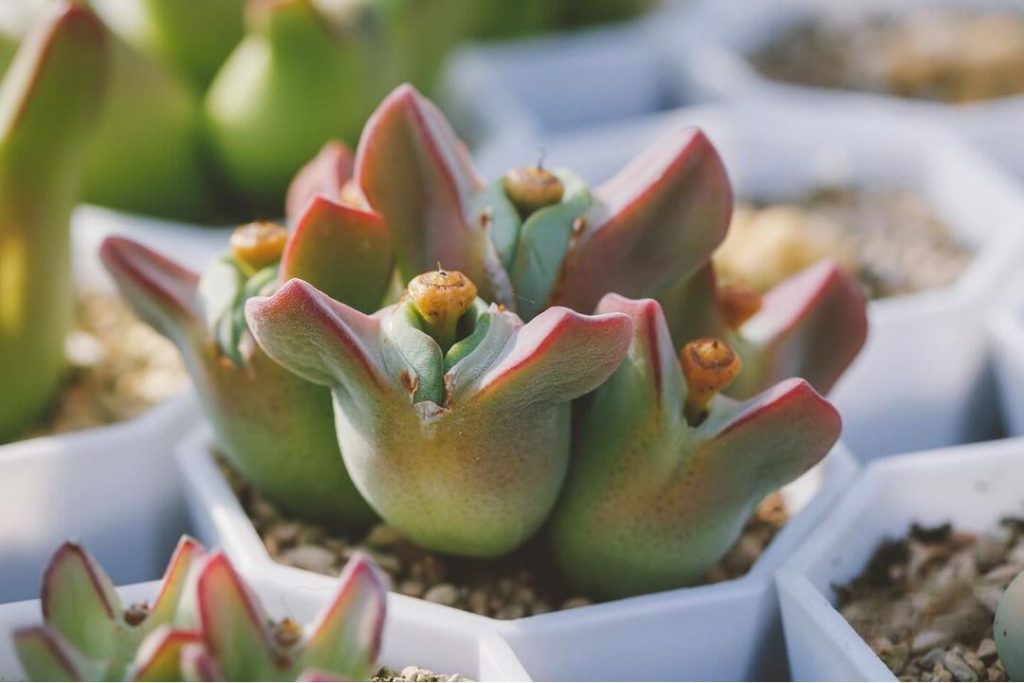
Contents
About Conophytum bilobum
Hailing from the Northern Cape Province of South Africa, Conophytum bilobum is a small, ground-hugging succulent that blends in perfectly with its rocky habitat. At maturity, the paired thick leaves resemble pebbles or stones, measuring up to 3 inches wide and 3 inches tall.
The surface texture ranges from smooth to velvety to slightly rough. Colors vary drastically, including whitish-green, bluish-green, brownish-pink, and deep purple tones. In autumn, large yellow, scentless flowers up to 1 inch wide may appear, opening during the day.
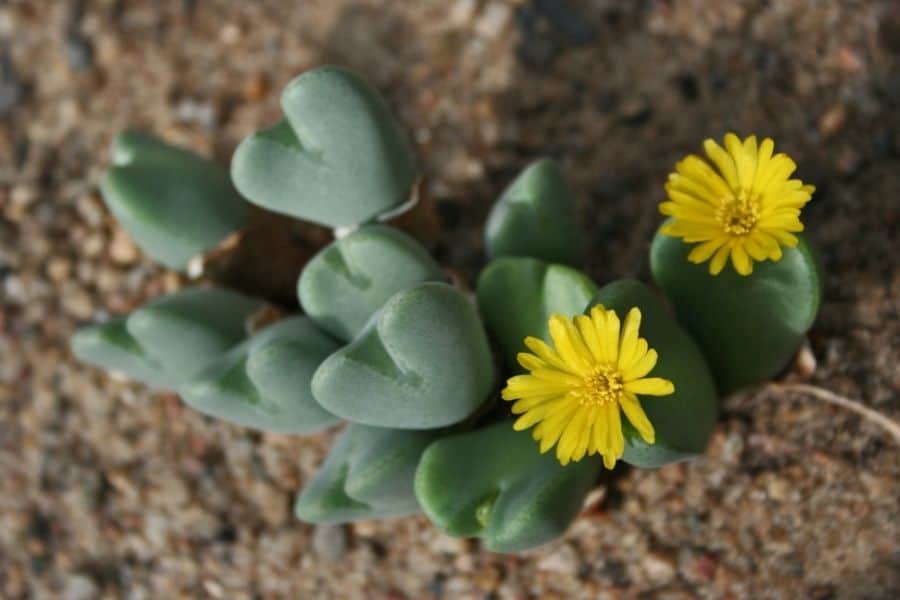
Related Post:
143 Types of Conophytum With Pictures
How to Care For Conophytum bilobum
Light
These unusual succulents need plenty of bright light, around 6 hours per day. However, they can burn in direct hot sun. Introduce sunlight gradually after dormancy. A bright, sunny window is ideal indoors, or use a grow light around 6 inches away for 12-14 hours per day.
Water
Water thoroughly but infrequently during the fall to early spring growth period, allowing the soil to fully dry between waterings. A good rule is to water every 1-2 weeks. Reduce watering to once a month during its summer dormancy.
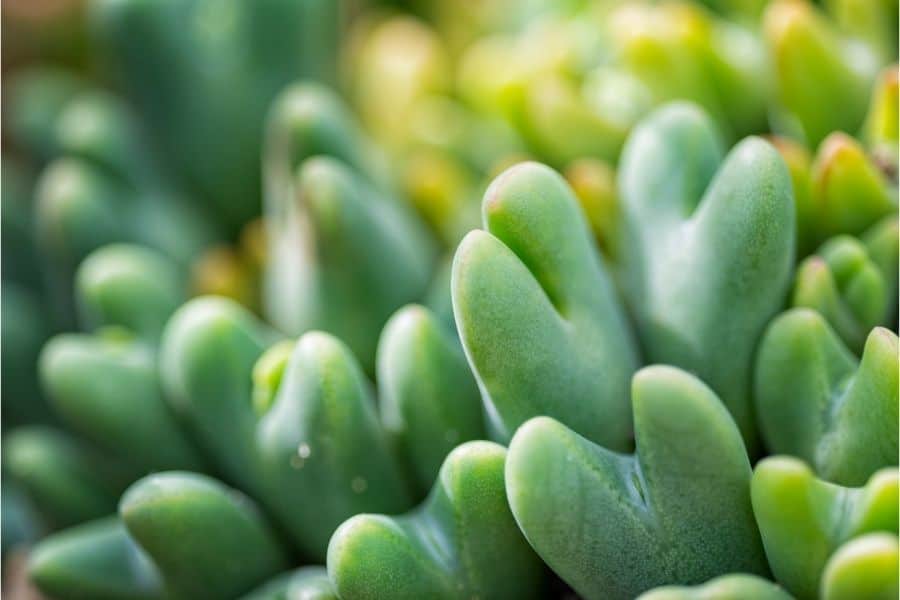
Soil
Conophytum bilobum requires very well-draining soil to prevent rot. Use a gritty succulent mix, or make your own by combining potting mix with sand, perlite, and a little limestone. Ensure the pot has ample drainage holes.
Fertilizing
These low-feeders rarely require fertilizer. If desired, apply a balanced, diluted succulent fertilizer in spring before new growth emerges, and again when buds appear in fall.
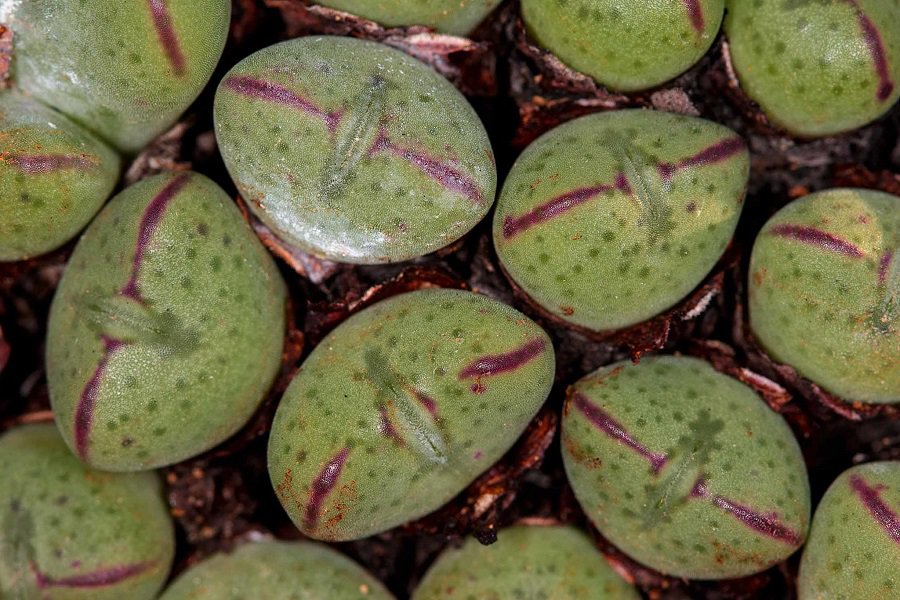
Pests and Diseases
Mealybugs, caterpillars, and snails may be occasional pests. Treat with insecticidal soap or alcohol if needed. Root rot and discoloration can signal overwatering or lack of sun.
How to Propagate Conophytum bilobum
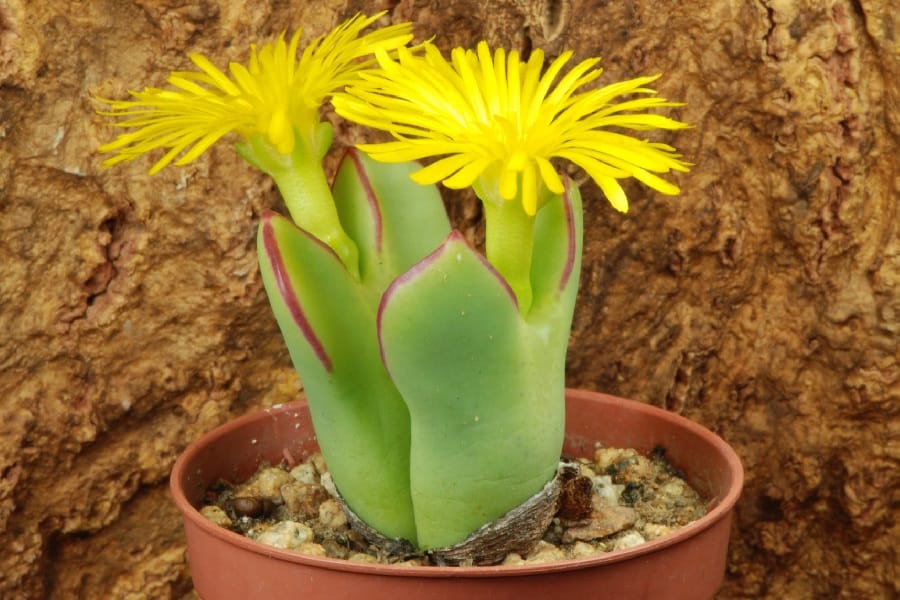
Conophytum bilobum can be easily propagated from seeds, offsets or leaf cuttings:
- Seeds – Use a well-draining seed starter mix, cover lightly, and keep moist until germination in 4 weeks. Reduce water after sprouting.
- Offsets – Gently remove offsets by twisting the cluster from the mother plant. Include root portion. Plant offsets just below the soil surface.
- Leaf Cuttings – Allow a leaf to callus over for 2-3 days after removal, then insert vertically into dry soil. Water sparingly after roots form.
Enjoy the thrill of growing your own living pebbles! With their otherworldly looks and easy care, it’s no wonder Conophytum bilobum has earned a cult following among succulent fans worldwide. What unusual plant will you discover next?
